Maternal Protein Restriction Alters the Expression of Proteins Related to the Structure and Functioning of the Rat Offspring Epididymis in an Age-Dependent Manner
- PMID: 35517501
- PMCID: PMC9061959
- DOI: 10.3389/fcell.2022.816637
Maternal Protein Restriction Alters the Expression of Proteins Related to the Structure and Functioning of the Rat Offspring Epididymis in an Age-Dependent Manner
Abstract
Nutrition is an environmental factor able to activate physiological interactions between fetus and mother. Maternal protein restriction is able to alter sperm parameters associated with epididymal functions. Since correct development and functioning of the epididymides are fundamental for mammalian reproductive success, this study investigated the effects of maternal protein restriction on epididymal morphology and morphometry in rat offspring as well as on the expression of Src, Cldn-1, AR, ER, aromatase p450, and 5α-reductase in different stages of postnatal epididymal development. For this purpose, pregnant females were allocated to normal-protein (NP-17% protein) and low-protein (LP-6% protein) groups that received specific diets during gestation and lactation. After weaning, male offspring was provided only normal-protein diet until the ages of 21, 44, and 120 days, when they were euthanized and their epididymides collected. Maternal protein restriction decreased genital organs weight as well as crown-rump length and anogenital distance at all ages. Although the low-protein diet did not change the integrity of the epididymal epithelium, we observed decreases in tubular diameter, epithelial height and luminal diameter of the epididymal duct in 21-day-old LP animals. The maternal low-protein diet changed AR, ERα, ERβ, Src 416, and Src 527 expression in offspring epididymides in an age-dependent manner. Finally, maternal protein restriction increased Cldn-1 expression throughout the epididymides at all analyzed ages. Although some of these changes did not remain until adulthood, the insufficient supply of proteins in early life altered the structure and functioning of the epididymis in important periods of postnatal development.
Keywords: CLDN-1; epididymis; hormone receptors; maternal protein restriction; postnatal development; src.
Copyright © 2022 Cavariani, de Mello Santos, Chuffa, Pinheiro, Scarano and Domeniconi.
Conflict of interest statement
The authors declare that the research was conducted in the absence of any commercial or financial relationships that could be construed as a potential conflict of interest.
Figures

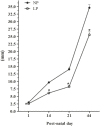
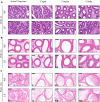
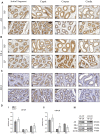
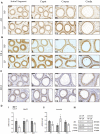
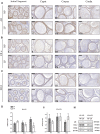
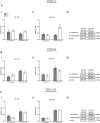
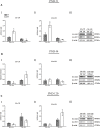
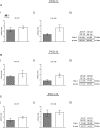
Similar articles
-
Maternal Protein Restriction Modulates Angiogenesis and AQP9 Expression Leading to a Delay in Postnatal Epididymal Development in Rat.Cells. 2019 Sep 17;8(9):1094. doi: 10.3390/cells8091094. Cells. 2019. PMID: 31533210 Free PMC article.
-
Maternal protein restriction differentially alters the expression of AQP1, AQP9 and VEGFr-2 in the epididymis of rat offspring.Int J Mol Sci. 2019 Jan 22;20(3):469. doi: 10.3390/ijms20030469. Int J Mol Sci. 2019. PMID: 30678254 Free PMC article.
-
NTP technical report on the toxicity studies of Dibutyl Phthalate (CAS No. 84-74-2) Administered in Feed to F344/N Rats and B6C3F1 Mice.Toxic Rep Ser. 1995 Apr;30:1-G5. Toxic Rep Ser. 1995. PMID: 12209194
-
[Epididymis in an experimental model of DHT deficiency: immunolocalization of ERalpha and ERbeta in rat epididymal epithelial cells. In vivo and in vitro studies].Ann Acad Med Stetin. 2006;52(2):13-21; discussion 21. Ann Acad Med Stetin. 2006. PMID: 17633123 Polish.
-
Role of exosomes in sperm maturation during the transit along the male reproductive tract.Blood Cells Mol Dis. 2005 Jul-Aug;35(1):1-10. doi: 10.1016/j.bcmd.2005.03.005. Blood Cells Mol Dis. 2005. PMID: 15893944 Review.
Cited by
-
Gestational exposure to the great Chinese famine: early life undernutrition impact on prostatic hyperplasia in adulthood.Front Nutr. 2024 Jun 20;11:1391974. doi: 10.3389/fnut.2024.1391974. eCollection 2024. Front Nutr. 2024. PMID: 38966412 Free PMC article.
-
Maternal protein restriction affects the differentiation of cells in the epididymal epithelium lining of 44-day-old rats.Biol Open. 2025 Jun 15;14(6):bio060080. doi: 10.1242/bio.060080. Epub 2025 Jun 6. Biol Open. 2025. PMID: 38323644 Free PMC article.
References
LinkOut - more resources
Full Text Sources
Research Materials
Miscellaneous

